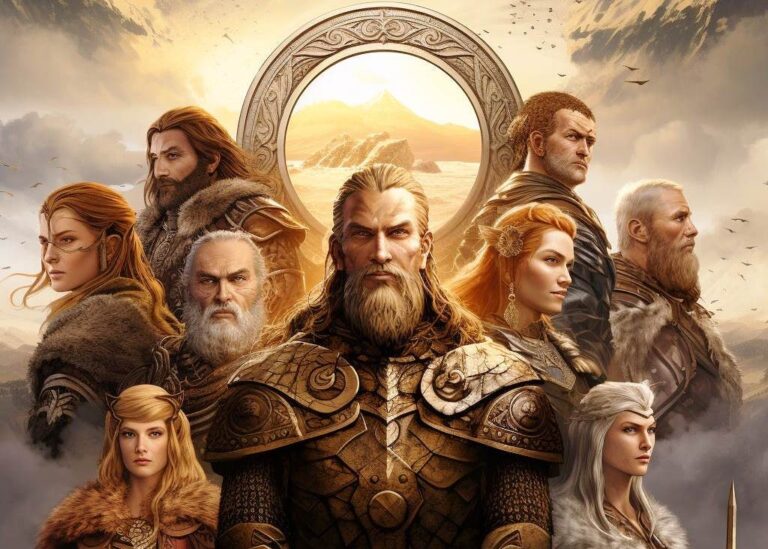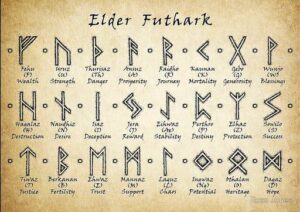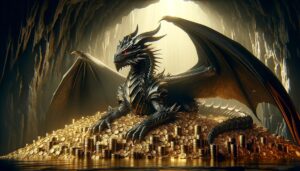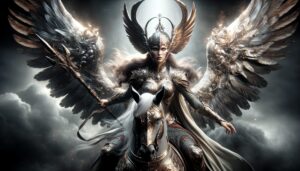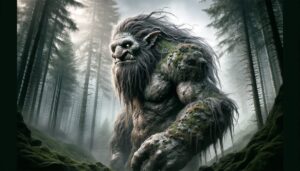Table of Contents
The Aesir are indeed one of the two main groups of deities in Norse mythology, the other being the Vanir. The Aesir are often associated with the sky, war, and rulership. While the term “Aesir” historically referred to a group of male gods, in modern usage, it is often extended to include the entire pantheon of Norse gods and goddesses. This expanded usage allows for the inclusion of goddesses like Frigg and Freyja, who play significant roles in Norse mythology.
The Aesir are a group of deities in Norse mythology, known for their association with the sky, war, and rulership. They are one of the two main groups of gods in Norse mythology, the other being the Vanir. The Aesir are often considered the principal clan of gods in the Norse pantheon.
Prominent members of the Aesir include:
Odin: Also known as the Allfather, Odin is the chief of the Aesir. He is associated with wisdom, poetry, war, and death. Odin is known for his one eye, having sacrificed the other in exchange for wisdom.
Thor: Thor is the god of thunder and one of the most popular and well-known Norse deities. He is known for his immense strength and his famous hammer, Mjölnir, which he uses to protect the gods and humans from various threats.
Frigg: Frigg is the queen of the Aesir and the wife of Odin. She is associated with marriage, fertility, and motherhood.
Baldr: Baldr is the god of light and purity. He is known for his beauty and is often seen as a symbol of goodness and light in Norse mythology.
Tyr: Tyr is the god of law and justice, often associated with bravery and self-sacrifice.
Heimdall: Heimdall is the guardian of the Bifröst (the rainbow bridge that connects Asgard, the realm of the gods, to Midgard, the world of humans). He has extraordinary senses and is often depicted as the watchman of the gods.
Idunn: Idunn is the goddess of youth and keeper of the apples that grant eternal youth to the gods.
These are just a few of the prominent Aesir gods. The Aesir and the Vanir initially had a conflict but eventually made peace, and both groups of gods coexist in the Norse pantheon. The Aesir play important roles in Norse mythology and are featured in many of the well-known Norse sagas and legends.
How to pronounce Aesir
The pronunciation of “Aesir” in Old Norse is not straightforward for English speakers, but it is commonly approximated as “AY-seer” with the first syllable pronounced like the English word “aye” (as in “yes”) and the second syllable rhyming with “seer.” The “r” is not strongly pronounced, but it’s more of a slight rolling or trilling sound.
So, you can pronounce “Aesir” as “AY-seer” with the emphasis on the first syllable. Keep in mind that this pronunciation may vary slightly depending on regional accents and personal preferences.
Aesir Origins
Proto-Indo-European Roots: Some scholars have suggested that the Norse gods, including the Aesir, have their roots in the ancient Proto-Indo-European religion. This theory posits that the gods of the Norse pantheon share common ancestry with other Indo-European deities, such as the Vedic gods of ancient India and the gods of ancient Greece and Rome. There are similarities in the roles and attributes of some of these deities, which may indicate a shared cultural and linguistic heritage.
Migration and Syncretism: The Norse myths and pantheon likely developed over a long period of time through the interactions and migrations of various Germanic and Scandinavian tribes. As different groups came into contact with each other and with other cultures, they may have incorporated and adapted deities and myths, resulting in the complex pantheon we see in Norse mythology. The Aesir themselves could be a result of syncretism and amalgamation of various tribal and regional deities.
Divine Struggles and Alliances: Norse mythology contains myths about conflicts and alliances between different groups of gods, including the Aesir and the Vanir. The Aesir and the Vanir were initially separate groups of deities, and their eventual unification through a treaty and hostage exchange may symbolize the merging of different divine traditions.
Cultural and Historical Influences: The Aesir and the broader Norse pantheon were likely influenced by the historical and cultural experiences of the Norse people. Their myths and gods may reflect the challenges, aspirations, and beliefs of the society in which they developed.
Aesir in History
The Aesir, as characters from Norse mythology, do not have a direct historical presence or influence in the same way that historical figures or events do. Norse mythology is a collection of ancient stories and beliefs from the pre-Christian Germanic peoples of Scandinavia and other regions.
The Aesir, along with other Norse gods and mythological figures, are primarily known through the Poetic Edda and the Prose Edda, two medieval Icelandic texts written by Snorri Sturluson in the 13th century. These texts preserve the mythology and stories of the Norse gods, including Odin, Thor, and other Aesir deities.
While the Aesir are not historical figures in the conventional sense, their influence can be seen in the cultural and literary traditions of the Scandinavian region. Norse mythology and the Aesir continue to be a significant part of Scandinavian heritage, inspiring art, literature, and even contemporary popular culture. Elements of Norse mythology, including the Aesir, have been incorporated into various forms of storytelling, such as novels, movies, and video games.
In modern times, the Aesir and Norse mythology have gained widespread recognition and have been influential in the fantasy genre, including the creation of fictional worlds and characters in literature and popular media. As such, their influence can be observed in the cultural and artistic realms, but they do not have direct historical influence as real-world historical figures or events do.
Aesir in Modern Influence
Literature: Norse mythology, including the Aesir, has been a source of inspiration for countless authors and novelists. Works like J.R.R. Tolkien’s “The Lord of the Rings” and J.K. Rowling’s “Harry Potter” series incorporate elements of Norse mythology into their fictional worlds.
Comic Books: The Aesir and Norse mythology have been featured in various comic book series, most notably in Marvel Comics. Characters like Thor, Odin, and Loki are central figures in Marvel’s Thor comics and have been adapted into successful film franchises in the Marvel Cinematic Universe.
Video Games: Many video games draw inspiration from Norse mythology, often featuring the Aesir as characters or central themes. Popular titles like “God of War” and “Assassin’s Creed Valhalla” explore Norse mythology and the Aesir in their narratives.
Television and Film: Norse mythology, and the Aesir in particular, have been depicted in various TV shows and movies. The Aesir play prominent roles in series like “Vikings” and “Norsemen,” as well as in films like “The 13th Warrior” and “Valhalla Rising.”
Music: Several musicians and bands have drawn inspiration from Norse mythology in their lyrics and album art. For example, Led Zeppelin’s “Immigrant Song” makes reference to Valhalla and the hammer of Thor.
Art and Illustration: Norse mythology, including depictions of the Aesir, has been a frequent subject of art and illustration, with artists creating vivid portrayals of these legendary figures.
Pop Culture References: Elements of Norse mythology often make their way into everyday pop culture references. From the use of Thor’s hammer, Mjölnir, in various contexts to phrases like “going berserk” derived from the berserker warriors, Norse elements have become part of everyday language.
Fashion and Design: Norse symbols and motifs, such as Viking runes and the hammer of Thor, are often used in fashion and design, appearing on clothing, jewelry, and accessories.
Sports and Mascots: Norse mythology has even influenced the naming and mascots of sports teams, as well as their logos and branding.
Role-Playing Games: Tabletop and digital role-playing games often incorporate Norse-inspired settings and deities, allowing players to interact with the Aesir and other figures from Norse mythology.
